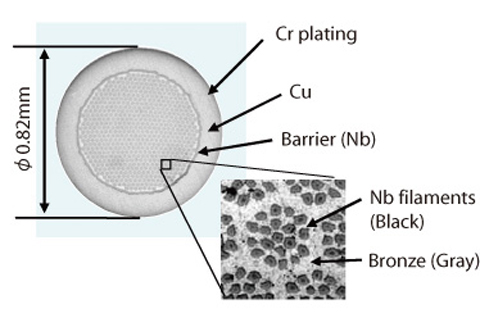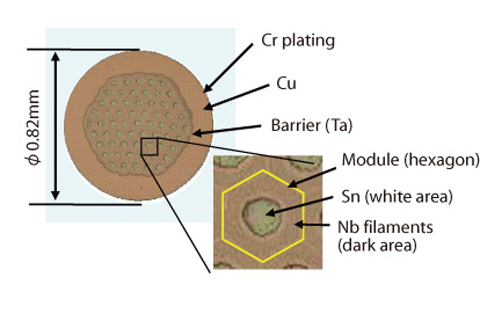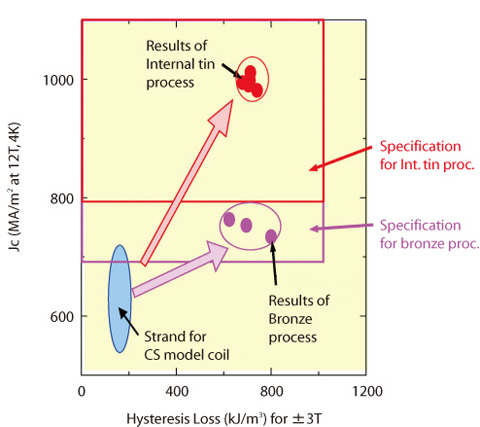
Fig.3-21 Cross section of bronze processed strand

Fig.3-22 Cross section of internal tin processed strand

Fig.3-23 Performance of the developed strand
Magnetic fields of 12 to 13 T are required to generate and confine plasma for International Thermonuclear Experimental Reactor ("ITER"). To generate such high magnetic fields, huge amounts of high performance Nb3Sn strand must be produced. The strand is required to have not only high critical current density (Jc), but also low hysteresis loss in a varying field. These are contradictory characteristics for a strand and therefore, it is necessary to develop a new technology to achieve both requirements.
Typical methods to fabricate Nb3Sn strand are the bronze process and the internal tin process. In the bronze process, Niobium (Nb) filaments are embedded in bronze (Fig.3-21), and Nb3Sn is produced by a heat treatment at 650°C for 200 hours. A major barrier to improving Jc is the low tin content in a strand. Recently good quality of high tin content bronze has become available and adopting this bronze has realized the enhancement of Jc.
In the internal tin process, Nb filaments and tin (Sn) rods are embedded in copper (Fig.3-22). It is relatively easy to increase tin content in this strand and to enhance Jc, but hysteresis loss drastically increases due to the formation of superconducting rings by the joining of filaments near Sn rods upon heat treatment. A hexagon, in which a large number of filaments and a single Sn rod are embedded, is called a "module." Downsizing the module and optimizing the ratio of Nb to Sn have restrained this increase in the hysteresis loss because diameter and thickness of the ring are reduced. Consequently, both high Jc and low hysteresis loss have been satisfied.
0.1-tons strands fabricated through both processes have been demonstrated to satisfy the specifications, as shown in Fig.3-23. While Jc specifications at 4K are different between the two processes, they are the same value at the operating condition of the "ITER" (12 T, 5.7 K and strain of -0.76%). JAEA has achieved these Nb3Sn fabrication results ahead of the other "ITER" participants, and thus JAEA will be make the largest contribution in strand supply among the "ITER" parties.